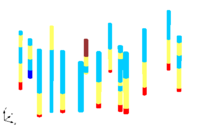GMS:Converting Borehole Data: Difference between revisions
From XMS Wiki
Jump to navigationJump to search
No edit summary |
No edit summary |
||
| Line 9: | Line 9: | ||
; Sample Data to 3D Scatter Points: Brings up the ''Sample Data → Scatter Points'' dialog that is used to create a 3D scatter point set from sample data. | ; Sample Data to 3D Scatter Points: Brings up the ''Sample Data → Scatter Points'' dialog that is used to create a 3D scatter point set from sample data. | ||
; Sample Data to Stratigraphy : Opens the ''Sample Data → Stratigraphy'' dialog that allows defining stratigraphy (borehole contacts) based on the sample data. | ; Sample Data to Stratigraphy : Opens the ''Sample Data → Stratigraphy'' dialog that allows defining stratigraphy (borehole contacts) based on the sample data. | ||
; Watertable to 2D Scatter Points : The water table coordinates for a set of boreholes can be converted to a 2D scatter point set using the '''Water Table → 2D Scatter Points''' command. | ; Watertable to 2D Scatter Points : The water table coordinates for a set of boreholes can be converted to a 2D scatter point set using the '''Water Table → 2D Scatter Points''' command. A dialog will apear asking to assign a name to the new scatter set before the conversion is completed. | ||
; Add Contacts to TIN : Used to enter a point from a contact into the active TIN. The contact(s) are first selected and the command is then chosen from the ''Borehole'' menu. Typically all contacts which should be part of a TIN are selected before generating the TIN, but sometimes one is inadvertently left out, or more boreholes are added later. | ; Add Contacts to TIN : Used to enter a point from a contact into the active TIN. The contact(s) are first selected and the command is then chosen from the ''Borehole'' menu. Typically all contacts which should be part of a TIN are selected before generating the TIN, but sometimes one is inadvertently left out, or more boreholes are added later. | ||
